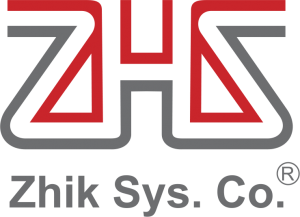Health Safety Environment Management System - HSE-MS
All companies manage safety, environmental protection or the health of their workers. They do it if only by complying with applicable legislation or doing nothing, which is also a system (then of non-management).
Every enterprise, in the course of its development, has introduced risk control methods to avoid accidents, or environmental pollution.
At some point in time, these methods, systems, and programmes of all sorts constitute an inextricable web whose complexity becomes counterproductive. Overlaps appear, relationships between the different elements in place are not clear.
There is therefore a need to put the system in order, and to structure everything so that every control measure regains its full meaning, and becomes framed in a complete and consistent set, the Management System.
This approach has proved useful in the area of Quality Management, which led to a definition of these systems in the ISO 9000 standard.
A similar approach in environmental protection has led to the development of the ISO 14001 standard, which codifies environmental management systems in a spirit of continual improvement.
As regards safety, the structuring effort has been based on the ISO 14001 standard, transposing it in the realm of accident control, and introducing risk analysis as a central element. The product of this is the OHSAS 18001 specification, which for various reasons has not been taken as an ISO standard, but has nevertheless been widely adopted as the reference standard for safety and occupational health Management Systems.
A Management System can therefore be defined as a structured set of measures taken or recommended to achieve an initially defined result, guaranteeing stability of this result in order to be able to set even more stringent results, in other words implementing a process of continual improvement.
ISO 10001 Quality Management – Customer Satisfaction
o Guidelines for Codes of Conduct for Organizations
Where would I use ISO 10001?
ISO 10001 provides guidance for planning, designing, developing, implementing, maintaining and improving customer satisfaction codes of conduct. It applies to an organization’s promises to its customers regarding its behavior to improve customer satisfaction. It does not prescribe the substance of customer satisfaction codes of conduct.
ISO 10001 can be used by any organizations no matter what type, size or product. The focus is on customers outside of the organization, not suppliers or its personnel..
• Annex A provides examples of codes for different organizations.
• Annex C gives guidance for small businesses.
ISO 10001is not intended for certification or for contractual purposes, and it is not intended to change any rights or obligations provided by applicable statutory and regulatory requirements.
If you follow these guidelines, you may improve:
• Customer confidence in an organization
• Customer expectations of your products and customer relationship
You may be interested in ISO 26000- Social Responsibility
ISO 10002 Quality Management - Customer Satisfaction
o Guidelines for Complaints Handling in Organizations
Where would I use ISO 10002?
ISO 10002provides guidance on the process of complaints handling related to and can be used as one of the processes of an overall quality management system.
ISO 10002 is not applicable to disputes referred for resolution outside the organization or for employment-related disputes. It is also intended for use by organizations of all sizes and in all sectors, but Annex A provides guidance specifically for small businesses.
ISO 10002 addresses the following aspects of complaints handling:
• Improved customer satisfaction by creating a customer-focused environment that is open to feedback (including complaints), resolving any complaints received, and enhancing the organization’s ability to improve its product and customer service;.
• Management commitment through adequate acquisition and deployment of resources, including personnel training;
• Recognizing and addressing the needs and expectations of complainants;
• Providing an open, effective and easy-to-use complaints process;
• Analyzing and evaluating complaints in order to improve the product and customer service quality;
• Auditing of the complaints-handling process
• Reviewing the effectiveness and efficiency of the complaints-handling process.
ISO 10003 Quality Management Customer Satisfaction
o Guidelines for Dispute Resolution External to Organizations
Where would I use ISO 10003?
Benefits of ISO 10003:
• Transparent System- You can post your process so your clients see that you have an open, effective and easy-to-use complaints process.
• Customer Confidence- A standardized commitment to complaint resolution shows them that any complaints will be addresses.
• Improved Efficiency-Continuous improvement allows root cause analysis to improve organization’s operations.
• Better Relationship- System helps to adopt a customer-focused approach to handle, analyze and review complaints
• Auditable System- Complaint management system is auditable to check that the requirements are being followed.
ISO 10004 Processes to monitor/measure customer satisfaction.
Where would I use ISO 10004?
• ISO/TS 10004helps an organization to define and implement processes to monitor and measure customer satisfaction.
• ISO/TS 10004 can be used by any organizations no matter what type, size or product. The focus is on customers outside of the organization.
• It is a guidance standard .
ISO 10005 Guidelines for the development, review, acceptance, application and revision of quality plans.
Where would I use ISO 10005?
ISO 10005 provides guidelines for the development, review, acceptance, application and revision of quality plans. It is applicable whether or not the organization has a management system in conformity with ISO 9001.
ISO 10005 is applicable to quality plans for a process, product, project or contract, any product category (hardware, software, processed materials and services) and any industry. It is focused primarily on product realization and is not a guide to organizational quality management system planning.
ISO 10006 Guidance on the application of quality management in projects.
Where would I use ISO 10006?
ISO 10006 gives guidance on the application of quality management in projects.
It is applicable to projects of varying complexity, small or large, of short or long duration, in different environments, and irrespective of the kind of product or process involved. This can necessitate some tailoring of the guidance to suit a particular project.
ISO 10006 is not a guide to “project management” itself. Guidance on quality in project management processes is discussed in this International Standard. Guidance on quality in a project’s product-related processes, and on the “process approach”, is covered in ISO 9004.
ISO 10007 Quality management Guidelines for configuration management
Where would I use ISO 10007?
ISO 10007gives guidance on the use of configuration management within an organization. It is applicable to the support of products from concept to disposal.
It first outlines the responsibilities and authorities before describing the configuration management process that includes configuration management planning, configuration identification, change control, configuration status accounting and configuration audit.
ISO 10013 Guidelines for Quality Management System Documentation
Where would I use ISO 10013?
This Technical Report provides guidelines for the development and maintenance of the documentation necessary to ensure an effective quality management system, tailored to the specific needs of the organization. The use of these guidelines will aid in establishing a documented system as required by the applicable quality management system standard.
This Technical Report may be used to document management systems other than that of the ISO 9000 family, for example environmental management systems and safety management systems.
ISO 10014 Guidelines for Realizing Financial and Economic benefits
Where would I use ISO 10014?
ISO 10014 provides guidelines for realizing financial and economic benefits from the application of the ISO 9000 quality management principles.
ISO 10014 is directed to top management of an organization and complements ISO 9004 for performance improvements. It provides examples of achievable benefits and identifies management methods and tools that are available to assist with the achievement of those benefits.
ISO 10017 Guidance on Statistical Techniques for ISO 9001
Where would I use ISO 10017?
This Technical Report provides guidance on the selection of appropriate statistical techniques that may be useful to an organization in developing, implementing, maintaining and improving a quality management system in compliance with ISO 9001. This is done by examining those requirements of ISO 9001 that involve the use of quantitative data, and then identifying and describing the statistical techniques that can be useful when applied to such data.
The list of statistical techniques cited in this Technical Report is neither complete nor exhaustive, and does not preclude the use of any other techniques (statistical or otherwise) that are deemed to be beneficial to the organization. Furthermore, this Technical Report does not attempt to prescribe which statistical technique(s) are to be used; nor does it attempt to advise on how the technique(s) are to be implemented.
This Technical Report is not intended for contractual, regulatory or certification/registration purposes. It is not intended to be used as a mandatory checklist for compliance with ISO 9001 requirements. The justification for using statistical techniques is that their application would help to improve the effectiveness of the quality management system.
ISO 10019 Selection of Quality Consultants and Use of their Services
Where would I use ISO 10019?
ISO 10019 provides guidance for the selection of quality management system consultants and the use of their services.
It is intended to assist organizations when selecting a quality management system consultant. It gives guidance on the process for evaluating the competence of a quality management system consultant and provides confidence that the organization’s needs and expectations for the consultant’s services will be met.

